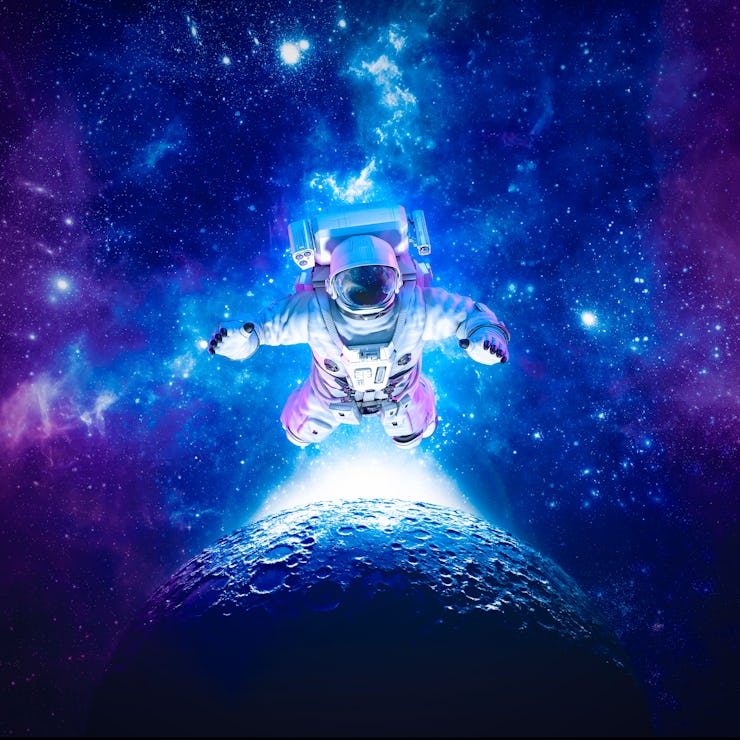Neuroscientists Turn to an Unexpected Source to Study How Brains Behave in Space
It's not astronauts.

There are some things the human brain, over the course of millions of years of evolution, just never encountered — of these, flying through space is probably the most extreme.
How do brains cope with the sudden lack of, well, weight? A paper published by a Belgian team this week in Frontiers in Physiology shines light on the ways brains figure out where they are and where they’re going. Part of a long-term study on the ways that space alters astronauts’ brains, it looks at fighter pilots as a stand-in since they’re the other profession that regularly experiences high and low g-forces as a part of work.
When an astronaut’s brain suddenly finds itself thrust into a weightless environment that it never expected to see, how does it figure out how to get around? Acceleration, including gravity, is detected by the otolith, or earstone, organs. Located in the inner ear, they give all vertebrates, from fish to humans, our sense of acceleration; the information from this vestibular system is connected with vision to give a sense of place.
In space, though, the systems don’t match as expected Earth. Instead, they give out conflicting signals, which astronaut brains then have to correct for. Usually this happens quickly — but what’s less clear is how.
“The transition of gravitational states usually poses the biggest problem for human performance,” Steven Jillings, a postdoctoral researcher at the University of Antwerp and one of the authors of the study, tells Inverse. “Gravitational transitions are what’s going to be most challenging to deal with.”
You knew a Top Gun screenshot was inevitable.
Inside the mind of a fighter pilot
To get at how brains adapt to sudden changes in gravity, the team took MRI scans of the brains of 10 fighter pilots and 10 non-pilots, and then compared them based on the number of hours they’d actually flown. What had changed? Parts of the pilots’ brains, including the left inferior frontal gyrus (which deals in part with processing and predicting complex information) participated less in the connectivity of the whole brain, while other parts — the parts linked to visual processing and balance — were more functionally connected; in other words, they were much likelier to be active at the same time.
While these changes were pronounced in pilots, the team “tried to correlate these changes with the amount of hours they’d flown — but that was not the case,” Jillings says. Instead, he suggests, it’s one of two things. Because this study can’t tell when or how these changes happened, maybe it’s just something common in fights pilots and astronauts, “some kind of thing that makes them perform very well on the earliest exams,” he explains.
Or, perhaps, it’s a relatively common adaptation for human brains, and “after just a couple of times flying this already happens and just kind of plateaus.” The team saw changes in regions they had already seen before in studies of people who’d undergone parabolic flight, where passengers are subjected to repeated short microgravity and high-gravity environments, so “it’s possible that these gravitational transitions might trigger it,” going from “very low to very high Gs all the time.”
And that is where this work might be most important in understanding astronauts’ experiences in the future. Right now, all crewed space missions involve the International Space Station, where astronauts stay there for months at a time.
A mission to the Moon or to Mars, where crews will be expected to perform complex tasks on a relatively short timeline, might pose a bigger challenge. Astronauts “deal with everything quite well on the ISS,” Jillings explains, “it’s the transition back to Earth that’s difficult.”
A mission to the Moon or Mars will have even more shifts — from the Earth’s gravity, to microgravity, to the Moon’s 1/6 G or Mars’s slightly more than 1/3 G, back to microgravity, then eventually back to the Earth’s 1 G.
For now, Jillings says, “what we’re doing is a bit more explorative, and we try to catch certain phenomenological results.” But going forward, the team hopes this work will help understand how — and if — training for microgravity works in the brain. “Considering we actually evolved here on earth with a force constant through evolution, a new gravitational state is quite a profound change.”
This article was originally published on